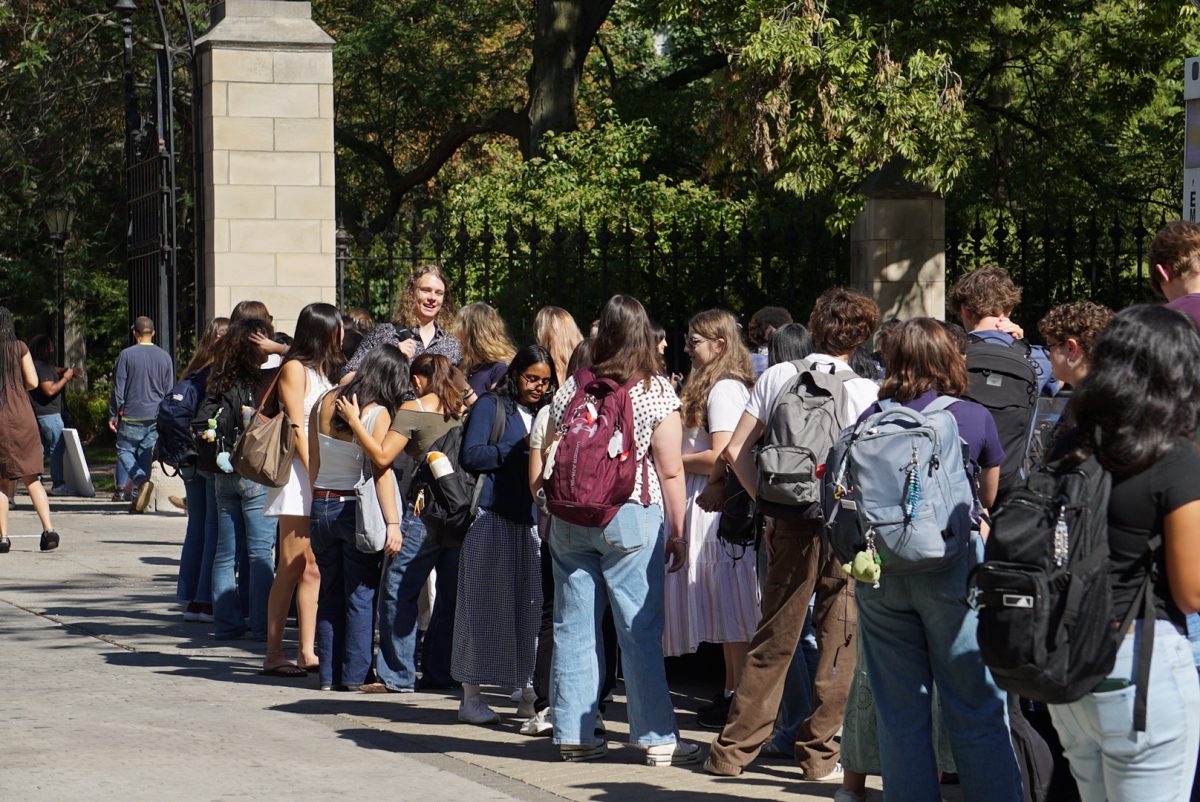Paul Sereno, Professor of Organic Biology and Anatomy, spoke yesterday as this year’s first speaker in the Rockefeller Chapel lecture series “What Matters to Me and Why.” “I’m trying to do something creative with my life,” Sereno said, speaking about his career as a paleontologist, as well as his efforts to inspire young people.
Sereno, who studied art and biology at Northern Illinois University, found himself drawn to archeology because he wanted a more active lifestyle. After earning a PhD from Columbia University, Sereno set off across the world in 1984. “I had my money-belt, 500 rolls of film (a duffle-bag’s worth), and a last-minute travel visa from the Chinese government,” Sereno said.
Traveling in Outer Mongolia, Sereno made his first major discovery. “Fifteen minutes after arriving in the ‘flaming cliffs’ region, I saw what looked to be a small white bone in the sand,” he said. The fragment, which turned out to be the top of a skull bone, was a major find—a complete skeleton of a previously conjectured dinosaur.
When asked about his adventures as a paleontologist, Sereno referred to an expedition he led in the Andes Mountains in Argentina in 1988. The team was looking for fossils of early dinosaurs that lived in what is now South America.
“Half the expedition members spoke Spanish, the other half spoke English, and we didn’t have a car when we got there. It was a challenge,” Sereno said. Though there were logistical problems, three weeks after the team’s arrival, they discovered several 12-foot long skeletons the species Herrarasaurus.
Returning in 1991, they unearthed a small three-foot skeleton of a yet-unidentified dinosaur. The animal, which has similarities to the fictionalized “Velociraptor,” was named Eoraptor.
Sereno’s latest discovery and project is that of the so-called “Super Croc,” a forty-foot long Crocodile discovered in areas of the Sahara desert which, 110 million years ago, had been rainforest. After excavating various parts of a large skeleton found just below the initial layer of sand, Sereno brought the bones back to the University, where a team of students, scientists, and artisans worked to create a full-scale model of the beast, which is approximately 110 million years old.
The lecture, which took place in the south lounge of the Reynolds Club, was standing room only. “Coming into the lecture, I didn’t know what I wanted to study I was always interested in history, but I never really knew where it was going to take me. I really related to Professor Sereno, and his expeditions seemed really exciting. After the lecture, I made the decision to study paleontology,” said first-year Benjamin Kolak.
Sereno is currently operating a foundation with his wife called “Project Exploration,” which provides the materials, methods, and means for scientific inquiry to curious high school students. He is planning on three expeditions this year: the Gobi desert in Mongolia in the spring, a dinosaur excavation site in Wyoming during the summer, and the Sahara Desert in the fall. “My long-term goal is to limit the number of continents I’m working on,” Sereno joked.
The “What Matters to Me and Why” lecture series is currently three years old, and invites administrators, faculty, and students to talk about what matters to them on the Thursday of every third and seventh week of every quarter.








